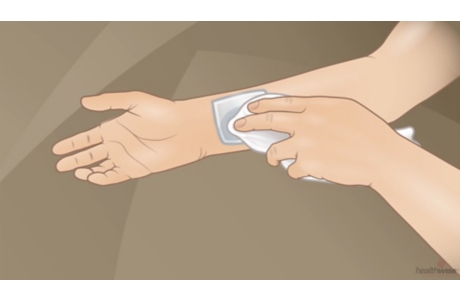Cut That Removes All Layers of Skin
Topic Overview
Cuts may slice off several layers of skin. As long as some of the layers of skin are still in place, new skin will form in the bottom of the wound and along the wound edges. The wound will heal from the bottom up.
When a cut or scrape removes all of the layers of skin (a full-thickness avulsion injury), fat and muscle may be visible. This type of wound will form new skin only on the edges of the wound and heals from the edges into the middle. The larger the wound, the longer it will take to heal, and the greater the risk of infection.
Cutting off the tip of a finger or toe are common avulsion injuries. If this avulsion injury is larger than0.25 in. (6.5 mm) by0.25 in. (6.5 mm), evaluation by a doctor is usually needed. If you are able to recover the piece of skin that was cut off, take it with you. It will probably not be reattached, but it will give your doctor more information about your injury.
Avulsion injuries are usually treated in one of the following ways:
- Allowing the wound to heal on its own, growing new skin from the edges into the middle
- Stitching the edges of the wound together, if the wound is small
- Reattaching the avulsed skin
- Grafting skin over the wound
Credits
Current as ofJune 26, 2019
Author: Healthwise Staff
Medical Review: William H. Blahd, Jr., MD, FACEP – Emergency Medicine
Adam Husney, MD – Family Medicine
Kathleen Romito, MD – Family Medicine
H. Michael O’Connor, MD, MMEd, FRCPC – Emergency Medicine
Martin J. Gabica, MD – Family Medicine
Current as of: June 26, 2019
Author: Healthwise Staff
Medical Review:William H. Blahd, Jr., MD, FACEP – Emergency Medicine & Adam Husney, MD – Family Medicine & Kathleen Romito, MD – Family Medicine & H. Michael O’Connor, MD, MMEd, FRCPC – Emergency Medicine & Martin J. Gabica, MD – Family Medicine


